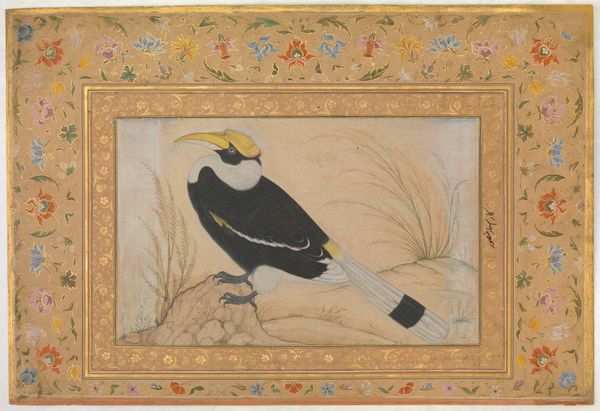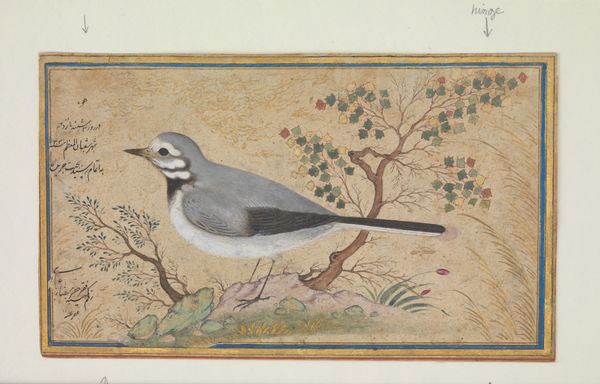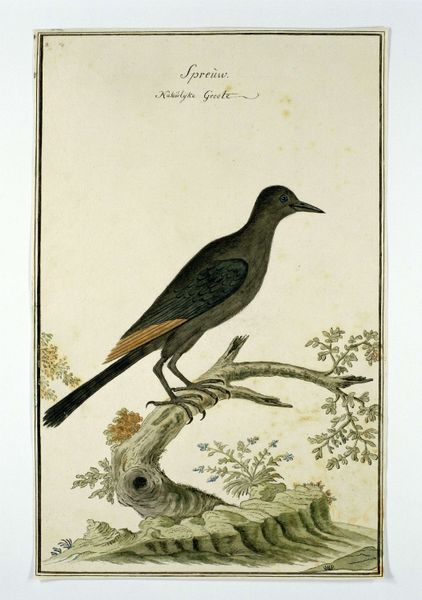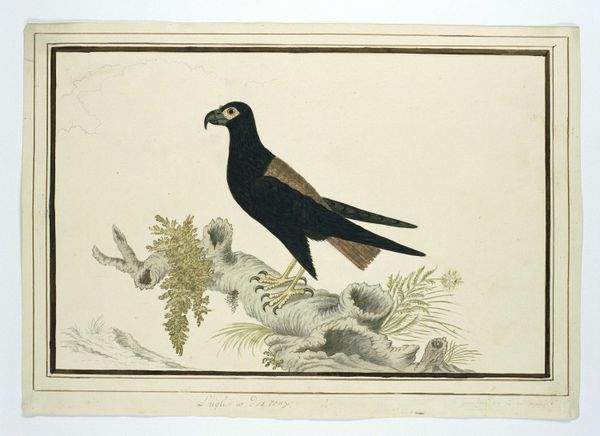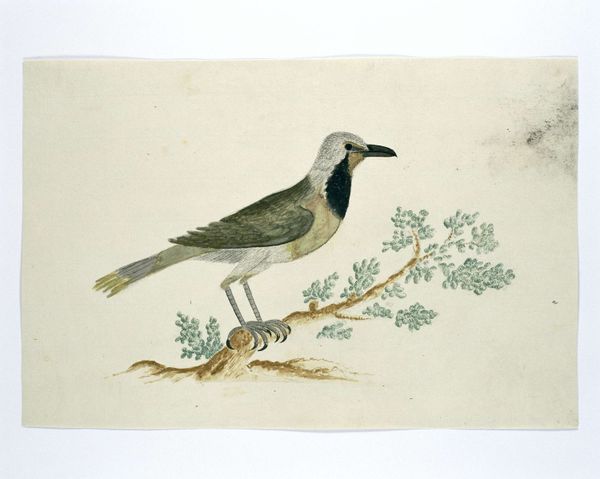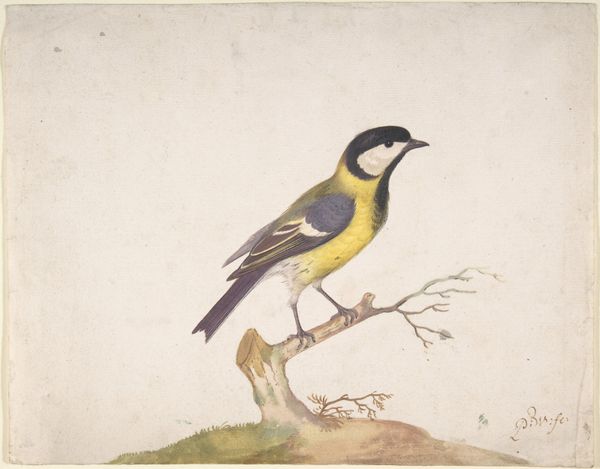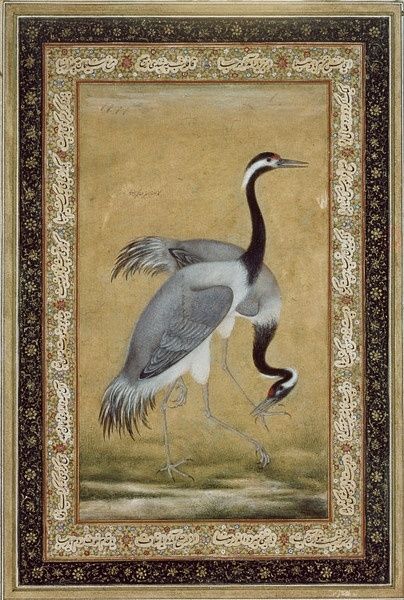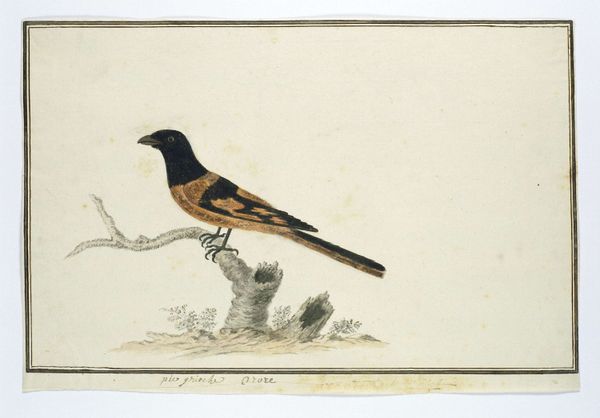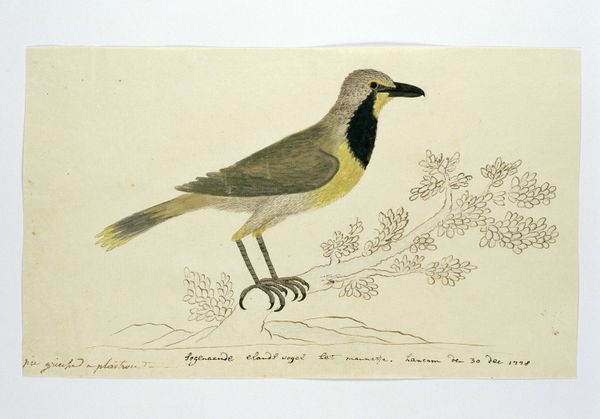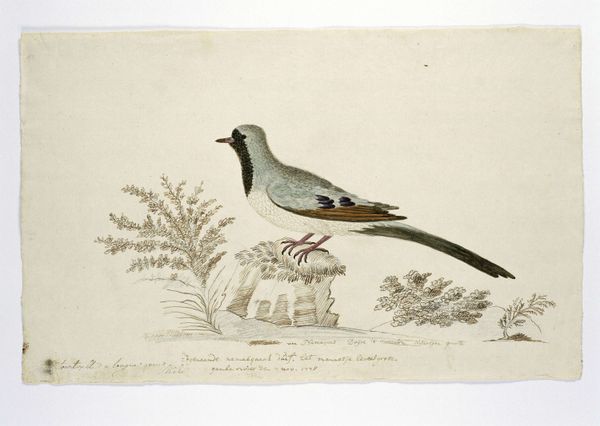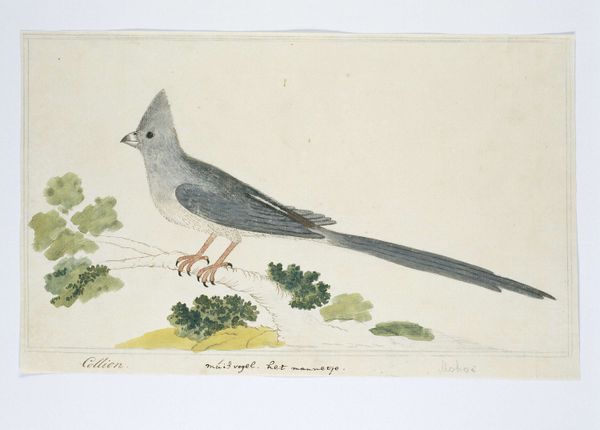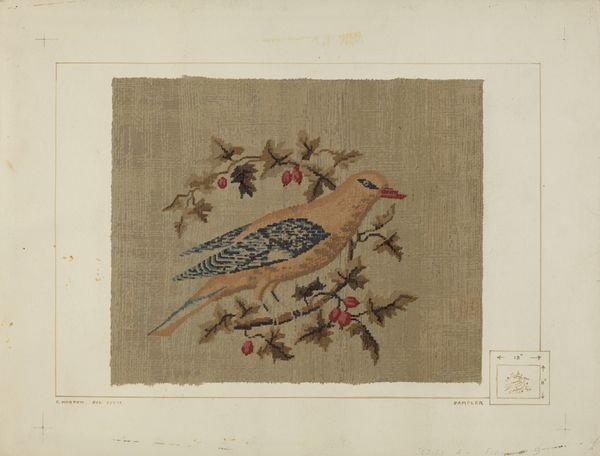
"Spotted Forktail", Folio from the Shah Jahan Album 1515 - 1640
0:00
0:00
painting, watercolor
#
painting
#
landscape
#
bird
#
flower
#
watercolor
#
islamic-art
#
watercolour illustration
#
miniature
Dimensions: H. 15 3/16 in. (38.6 cm) W. 10 3/8 in. (26.3 cm)
Copyright: Public Domain
Curator: Here we have a watercolor painting from the Shah Jahan Album dating from about 1615 to 1640, attributed to Abu'l Hasan, titled "Spotted Forktail." Editor: It’s such an elegant little scene. The colors are so restrained and muted. What strikes me immediately is how deliberately crafted the composition is—a perfectly balanced vignette, somehow both natural and idealized. Curator: Absolutely. It comes from a rich tradition of miniature painting that served powerful social functions, acting as potent status symbols that embodied both artistic skill and royal patronage. Albums like this were compiled to showcase the wealth and sophistication of the court. Editor: You see it in the meticulous brushwork, don't you? Look at how the artist renders each individual scale-like marking on the bird’s back, contrasted with the smooth washes on its wings and tail. Such precise and disciplined labor. Curator: And what of the cultural implications? The bird perched on a stone could be interpreted in many ways— perhaps a symbol of watchful vigilance, a naturalistic portrayal suggesting dominion over the animal kingdom, or even alluding to courtly virtues. Editor: Or maybe, and I might be simplifying it, it's just about seeing something beautiful and wanting to capture it, the sheer act of representing the forktail’s exquisite plumage and distinctive form through the materiality of paint, paper, and the artist's hand. How do the constraints of miniature art impact artistic creation and audience perception? Curator: These miniature paintings were intended to be closely viewed and contemplated. And your question about the material impact of their construction is a relevant one. This would have been displayed in books and albums for only very select, high-status viewers, underscoring the exclusivity of artistic appreciation and reinforcing social hierarchies. Editor: To see something so meticulously created in watercolor from this period gives pause, allowing us to question who consumes these products, and by extension, how our own viewing and sharing habits relate. It feels intimate yet carries echoes of a larger power structure, if only in the fine details. Curator: Agreed, an artifact deeply enmeshed in its own socio-political world yet timeless in its appeal, and that paradox keeps us talking about them now, centuries later. Editor: Indeed. Such an intricate rendering provides a window not just to an avain form but the artist's engagement, and his world!
Comments
No comments
Be the first to comment and join the conversation on the ultimate creative platform.
